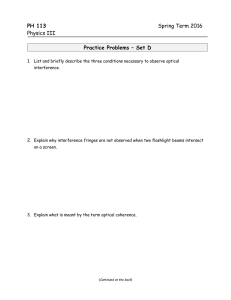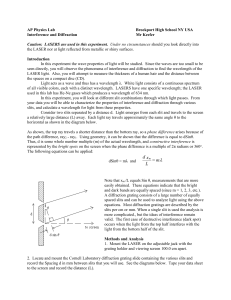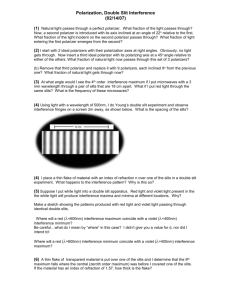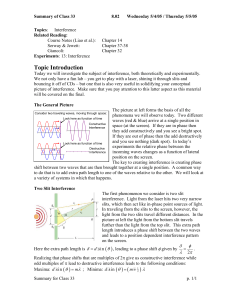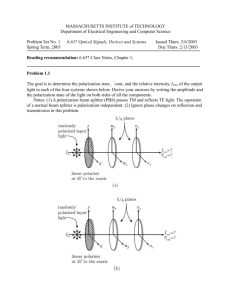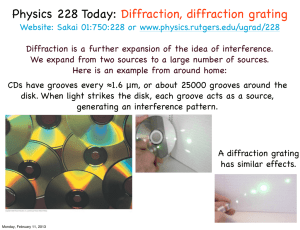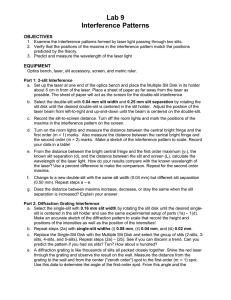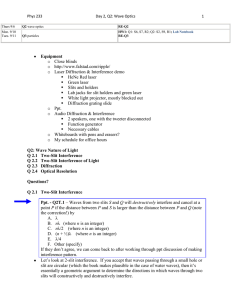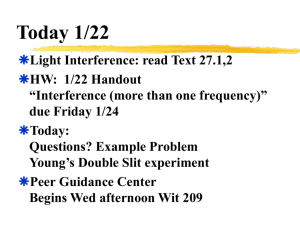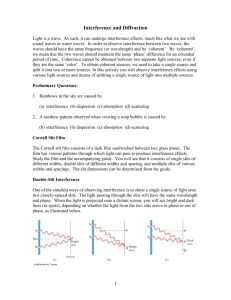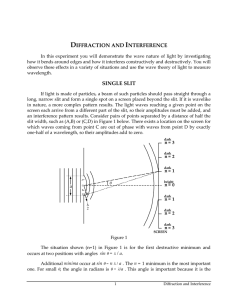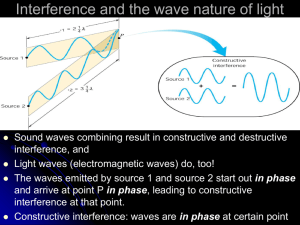Interference, Diffraction, Polarization
advertisement
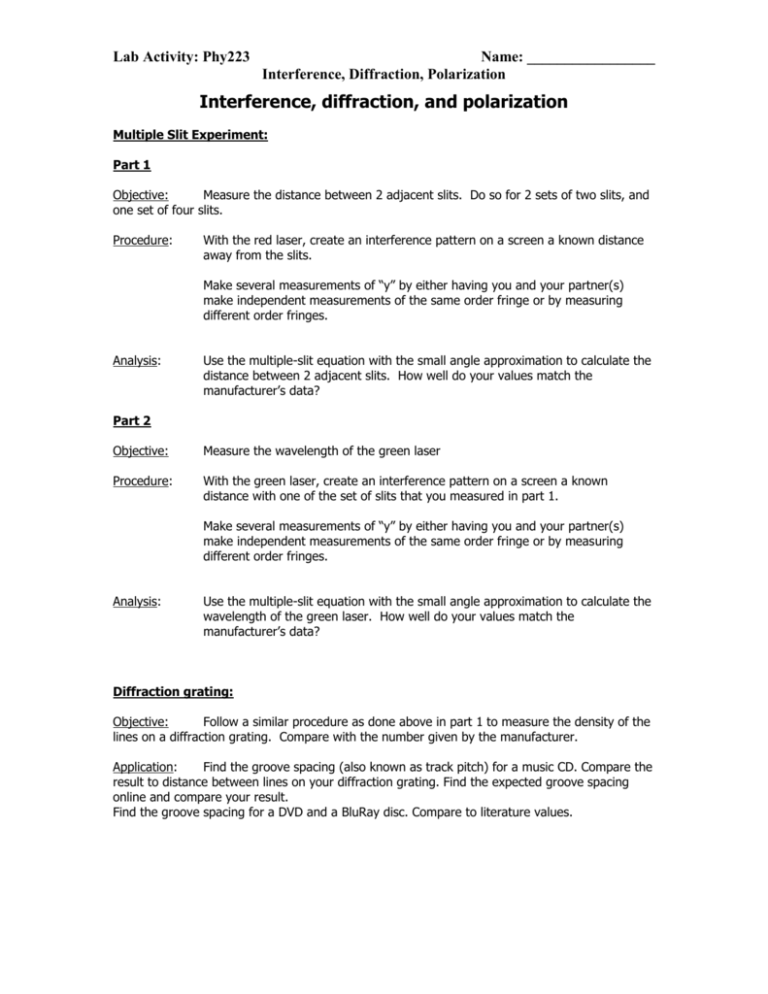
Lab Activity: Phy223 Name: _________________ Interference, Diffraction, Polarization Interference, diffraction, and polarization Multiple Slit Experiment: Part 1 Objective: Measure the distance between 2 adjacent slits. Do so for 2 sets of two slits, and one set of four slits. Procedure: With the red laser, create an interference pattern on a screen a known distance away from the slits. Make several measurements of “y” by either having you and your partner(s) make independent measurements of the same order fringe or by measuring different order fringes. Analysis: Use the multiple-slit equation with the small angle approximation to calculate the distance between 2 adjacent slits. How well do your values match the manufacturer’s data? Part 2 Objective: Measure the wavelength of the green laser Procedure: With the green laser, create an interference pattern on a screen a known distance with one of the set of slits that you measured in part 1. Make several measurements of “y” by either having you and your partner(s) make independent measurements of the same order fringe or by measuring different order fringes. Analysis: Use the multiple-slit equation with the small angle approximation to calculate the wavelength of the green laser. How well do your values match the manufacturer’s data? Diffraction grating: Objective: Follow a similar procedure as done above in part 1 to measure the density of the lines on a diffraction grating. Compare with the number given by the manufacturer. Application: Find the groove spacing (also known as track pitch) for a music CD. Compare the result to distance between lines on your diffraction grating. Find the expected groove spacing online and compare your result. Find the groove spacing for a DVD and a BluRay disc. Compare to literature values. Lab Activity: Phy223 Name: _________________ Interference, Diffraction, Polarization Single Slit Experiment: Objective: Measure the width of a single slit. Do so for 2 different single slits. Procedure: Create an interference pattern on a screen a known distance away from the slit. Select a minimum and make a measurement of its “y” and of its order. Analysis: Use the single-slit equation with the small angle approximation to calculate the width of the slit. How well do your values match the manufacturer’s data? Application: Measure the thickness of a piece of hair with the light from a laser. Why does one piece of hair behave like one single slit? Is your result reasonable? Soap bubbles: 1. Hold a soap film vertically in a Styrofoam cup and observe the evolution of the interference pattern. Look at it with white light. 2. Describe/draw the pattern of the colors. 3. Observe the bubble long enough to see a non reflecting portion toward the top. 4. Use what you know about phase shifts upon reflection and path difference to explain what you observed. 5. Estimate the thickness of the film of soap at different locations of the pattern. 6. Cut the back of the cup to see the pattern shown by the light going through the film of soap. Compare with what you saw looking at the front of the cup. Explain. Polarized light 1. Is the light emitted by a computer screen polarized? How could you find out? 2. Look at the table top with a polarizer. Rotate it. What do you observe? Is light reflected from a lake surface polarized? 3. Are your sunglasses also polarizers? If so, what do they do to reflections from a lake? Is this coincidence? 4. Align two polarizer on the optical bench. Rotate one of them until you get a minimum of light through the combination. Add a third polarizer in the middle with an orientation between the two original ones. What do you observe? Write-up: Title & Abstract For each experiment: Sketch the setup, include an enlarged picture of the slit(s) Data table showing all measurements and their averages, Sketch the interference pattern or the diffraction pattern, Derive the equation used to analyze the data and explain any approximations used. Lab Activity: Phy223 Name: _________________ Interference, Diffraction, Polarization Conclusion: How well did your lab work? Use percentage difference to support your claims. Include possible errors. Show how these errors could account for the variation in your data.



